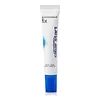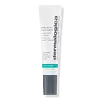What's inside
What's inside
 Key Ingredients
Key Ingredients

 Benefits
Benefits

 Concerns
Concerns

 Ingredients Side-by-side
Ingredients Side-by-side

Water
Skin ConditioningEthylhexyl Olivate
Skin ConditioningPentylene Glycol
Skin ConditioningHydroxyethyl Acrylate/Sodium Acryloyldimethyl Taurate Copolymer
Emulsion StabilisingCaprylic/Capric Triglyceride
MaskingPolyacrylate Crosspolymer-6
Emulsion StabilisingGlyceryl Stearate Citrate
EmollientSalicylic Acid
MaskingHexylresorcinol
AntimicrobialCeratonia Siliqua Fruit Extract
MaskingCaprylyl Glycol
EmollientPropanediol
SolventSqualane
EmollientGlycerin
HumectantLinoleic Acid
CleansingPhospholipids
Skin ConditioningPhytosterols
Skin ConditioningPolysorbate 60
EmulsifyingSorbitan Isostearate
EmulsifyingSodium Hydroxide
BufferingEthylhexylglycerin
Skin ConditioningCaffeyl Glucoside
AntioxidantDisodium Acetyl Glucosamine Phosphate
Skin ConditioningWater, Ethylhexyl Olivate, Pentylene Glycol, Hydroxyethyl Acrylate/Sodium Acryloyldimethyl Taurate Copolymer, Caprylic/Capric Triglyceride, Polyacrylate Crosspolymer-6, Glyceryl Stearate Citrate, Salicylic Acid, Hexylresorcinol, Ceratonia Siliqua Fruit Extract, Caprylyl Glycol, Propanediol, Squalane, Glycerin, Linoleic Acid, Phospholipids, Phytosterols, Polysorbate 60, Sorbitan Isostearate, Sodium Hydroxide, Ethylhexylglycerin, Caffeyl Glucoside, Disodium Acetyl Glucosamine Phosphate
Sulfur 5%
AntiseborrhoeicWater
Skin ConditioningNiacinamide
SmoothingPropanediol
SolventGlycerin
HumectantAcacia Senegal Gum
MaskingPolyacrylate Crosspolymer-6
Emulsion StabilisingHydroxyacetophenone
AntioxidantLactic Acid
BufferingPelargonium Graveolens Flower Oil
MaskingLavandula Hybrida Oil
EmollientLavandula Angustifolia Oil
MaskingCitrus Limon Peel Oil
MaskingSalvia Sclarea Oil
MaskingAloe Barbadensis Leaf Extract
EmollientCitrus Aurantium Dulcis Peel Oil
MaskingPunica Granatum Pericarp Extract
Skin ConditioningRosmarinus Officinalis Leaf Oil
MaskingMyristyl Myristate
EmollientBeta-Glucan
Skin ConditioningBiosaccharide Gum-1
HumectantGlyceryl Stearate
EmollientMaltodextrin
AbsorbentCaprylyl Glycol
EmollientPolylysine
Cetearyl Alcohol
Emollient1,2-Hexanediol
Skin ConditioningSodium Acrylates Crosspolymer-2
AbsorbentCeteareth-12
EmulsifyingTitanium Dioxide
Cosmetic ColorantTetrasodium Glutamate Diacetate
Potassium Cetyl Phosphate
EmulsifyingSodium Hydroxide
BufferingDimethyl Isosorbide
SolventThymol
AntimicrobialTerpineol
MaskingAlgin
MaskingCamphor
MaskingO-Cymen-5-Ol
AntimicrobialSodium Benzoate
MaskingLimonene
PerfumingLinalool
PerfumingCitronellol
PerfumingGeraniol
PerfumingSulfur 5%, Water, Niacinamide, Propanediol, Glycerin, Acacia Senegal Gum, Polyacrylate Crosspolymer-6, Hydroxyacetophenone, Lactic Acid, Pelargonium Graveolens Flower Oil, Lavandula Hybrida Oil, Lavandula Angustifolia Oil, Citrus Limon Peel Oil, Salvia Sclarea Oil, Aloe Barbadensis Leaf Extract, Citrus Aurantium Dulcis Peel Oil, Punica Granatum Pericarp Extract, Rosmarinus Officinalis Leaf Oil, Myristyl Myristate, Beta-Glucan, Biosaccharide Gum-1, Glyceryl Stearate, Maltodextrin, Caprylyl Glycol, Polylysine, Cetearyl Alcohol, 1,2-Hexanediol, Sodium Acrylates Crosspolymer-2, Ceteareth-12, Titanium Dioxide, Tetrasodium Glutamate Diacetate, Potassium Cetyl Phosphate, Sodium Hydroxide, Dimethyl Isosorbide, Thymol, Terpineol, Algin, Camphor, O-Cymen-5-Ol, Sodium Benzoate, Limonene, Linalool, Citronellol, Geraniol
Ingredients Explained
These ingredients are found in both products.
Ingredients higher up in an ingredient list are typically present in a larger amount.
Caprylyl Glycol is a humectant and emollient, meaning it attracts and preserves moisture.
It is a common ingredient in many products, especially those designed to hydrate skin. The primary benefits are retaining moisture, skin softening, and promoting a healthy skin barrier.
Though Caprylyl Glycol is an alcohol derived from fatty acids, it is not the kind that can dry out skin.
This ingredient is also used as a preservative to extend the life of products. It has slight antimicrobial properties.
Learn more about Caprylyl GlycolGlycerin is already naturally found in your skin. It helps moisturize and protect your skin.
A study from 2016 found glycerin to be more effective as a humectant than AHAs and hyaluronic acid.
As a humectant, it helps the skin stay hydrated by pulling moisture to your skin. The low molecular weight of glycerin allows it to pull moisture into the deeper layers of your skin.
Hydrated skin improves your skin barrier; Your skin barrier helps protect against irritants and bacteria.
Glycerin has also been found to have antimicrobial and antiviral properties. Due to these properties, glycerin is often used in wound and burn treatments.
In cosmetics, glycerin is usually derived from plants such as soybean or palm. However, it can also be sourced from animals, such as tallow or animal fat.
This ingredient is organic, colorless, odorless, and non-toxic.
Glycerin is the name for this ingredient in American English. British English uses Glycerol/Glycerine.
Learn more about GlycerinPolyacrylate Crosspolymer-6 is a texture enhancer and pH adjuster.
It is be used to thicken water-based products and create a gel-texture with a velvet feel.
One manufacturer claims this ingredient to have a pH range of 2-8 and to be biodegradable.
Learn more about Polyacrylate Crosspolymer-6Propanediol is an all-star ingredient. It softens, hydrates, and smooths the skin.
It’s often used to:
Propanediol is not likely to cause sensitivity and considered safe to use. It is derived from corn or petroleum with a clear color and no scent.
Learn more about PropanediolSodium Hydroxide is also known as lye or caustic soda. It is used to adjust the pH of products; many ingredients require a specific pH to be effective.
In small amounts, sodium hydroxide is considered safe to use. However, large amounts may cause chemical burns due to its high alkaline.
Your skin has a natural pH and acid mantle. This acid mantle helps prevent harmful bacteria from breaking through. The acid mantle also helps keep your skin hydrated.
"Alkaline" refers to a high pH level. A low pH level would be considered acidic.
Learn more about Sodium HydroxideWater. It's the most common cosmetic ingredient of all. You'll usually see it at the top of ingredient lists, meaning that it makes up the largest part of the product.
So why is it so popular? Water most often acts as a solvent - this means that it helps dissolve other ingredients into the formulation.
You'll also recognize water as that liquid we all need to stay alive. If you see this, drink a glass of water. Stay hydrated!
Learn more about Water